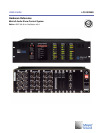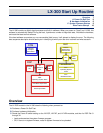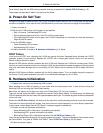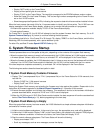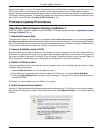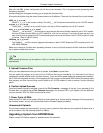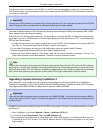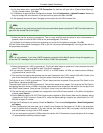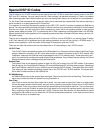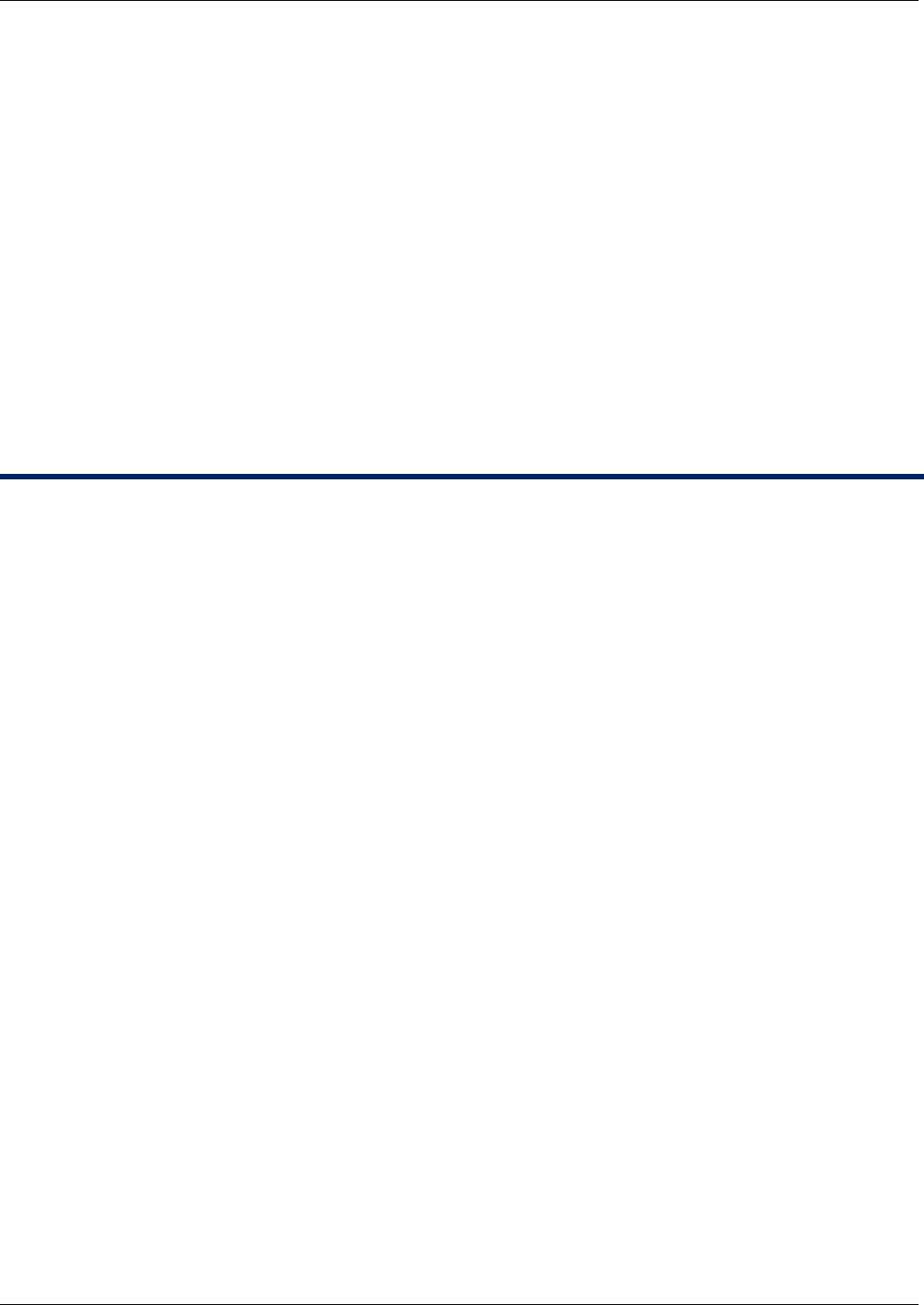
• Display "INIT" briefly on the Frame Status.
• Display all front panel lights for one second.
• Display "E1V6" on the Frame Status. The two digits correspond to the EPROM software version number.
• Show the Frame ID in the Frame ID display. This is a two-digit number corresponding to the Frame ID value
set on the LX-DSP module.
• Show the appropriate Expansion LEDs, indicating the expansion slots which have modules installed in them.
When the boot process has made it this far, it becomes easier to identify any failure points. The LX-300 can now
display messages in the Frame Status display, allowing you to monitor the boot process as it progresses.
4. Initialize the expansion modules: display "LCS3" on the Frame Status display.
5. Load system firmware.
For Frame IDs 01 through 32, the LX-300 will attempt to load the system firmware from flash memory. Go to C.
System Firmware Startup (p. 9), below, to continue following the boot process.
If the software load fails (or if the Frame ID is 33 through 79), display "REBO" on the Frame Status, and blink the
Watchdog LED five times repeatedly, with a pause between cycles.
For other IDs, see Boot ID codes Special DSP ID Codes (p. 16).
C. System Firmware Startup
The boot process takes one of two paths at this point, depending on the contents of the system flash memory:
• When the system flash memory is empty (no firmware exists), the LX-300 initializes its LX-LNK module and awaits
a firmware upload. Unless a fatal error occurs, an animated -EP- will be displayed in the Frame Status.
• When the firmware is available, the LX-300 attempts to load it. Unless an error occurs, the hardware will be further
initialized. If an LX-ELC EtherTracks module is installed in the LX-300, it will be loaded with the Linux server.
If the boot sequence completes successfully, an animated -OK- will be displayed in the Frame Status.
The following two sections describe these boot paths in detail.
If System Flash Memory Contains Firmware
1. Display "FILu" (uncompressed file) or "FILc" (compressed file) on the Frame Status for 2/10th seconds, then
load the file.
• Display "LOAD" for 1/10th second: success
• Display "badF" and "IE14": failure.
Erasing the System Flash memory and reloading the firmware may help resolve this problem. Please refer to the
instructions for firmware upgrades in the Matrix3 Repair Procedures (p. 19) section of this manual.
2. Execute firmware program and initialize the hardware. This sequence is similar to the hardware initialization
process described above, except that "E1V6" and "LCS3" are not displayed.
3. When the LX-300 has an LX-ELC EtherTracks module installed, the boot sequence will continue as described
below, EtherTracks Startup (p. 10), before progressing to the next step.
If System Flash Memory is Empty
When the system flash memory has been erased, the LX300 falls back to a simple software subsystem initialization
and awaits its firmware upload.
1. Initialize control software subsystems. In the event of an error, the appropriate error code will be displayed.
2. Initialize the LX-LNK module. Display "LINK" on the Frame Status, and update the link module FPGA program,
if newer software is available. In the event of a failure, the Frame Status will display "IE12".
3. Start the control software subsystems. The Frame Status will show the following:
• Display an animated "-EP-".
• Scroll any messages, such as error messages, across the display.
9
C. System Firmware Startup



